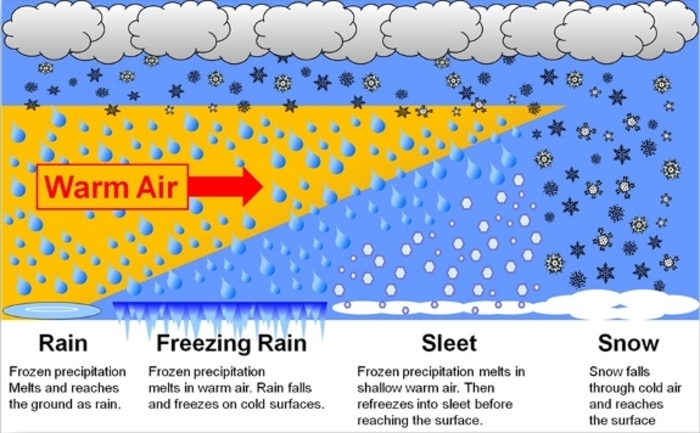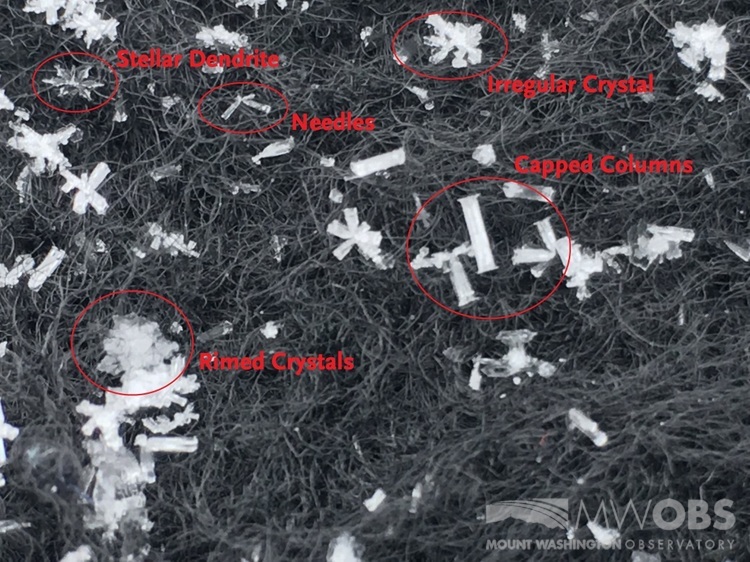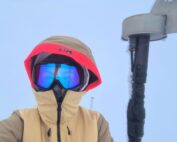Winter Precipitation
2018-01-02 15:55:01.000 – Taylor Regan, Weather Observer
With the recent Christmas storm fresh on many minds, and with more winter weather on the way, I wanted to take a look at some of the differences in precipitation type that can occur when the mercury drops to or even below freezing. The differences between rain and snow are fairly well known, but what about sleet or freezing rain? Knowing which type of precipitation is falling can clue you in on the overall state of the atmosphere around you, which is pretty neat!
In this blog post, I’ll cover four types of precipitation common in winter-season storms, especially in New England: rain, freezing rain, sleet, and snow. If you’re wondering, yes, there is a reason I listed them in that order, and it has to do with the quantity of freezing air in place overhead.
 Figure 1. Diagram depicting precipitation type in varying air temperatures. (Image from www.weather.gov/rnk/measure_icing)Caption text
Figure 1. Diagram depicting precipitation type in varying air temperatures. (Image from www.weather.gov/rnk/measure_icing)Caption textRain occurs when there is a large volume of above-freezing air overhead (the air is warmer than 32 degrees). Precipitation may start off as snow, but it melts as it falls through a warm layer, which extends all the way to the ground.
Freezing rain occurs when precipitation, which may start as snow, passes through a warm (above freezing) layer, and melts, turning to rain. At the surface, however, is a shallow pool of below-freezing air that, while not enough to cause the raindrops to refreeze prior to reaching the ground, means that they freeze instantly upon contact with anything that is at or colder than 32 degrees. This can cause significant ice accumulations on everything from power lines to trees to vehicles.
Sleet occurs when precipitation, falling as snow, passes through a shallow warm (above 32 degrees) layer, causing the snowflakes to partially melt. The partially melted snowflakes then pass through a deep cold layer, causing them to refreeze, but lacking their initial definition and form as snowflakes.
When the temperature is below freezing all the way from the cloud to the ground, it snows! Snowflakes can come in a variety of shapes and sizes, and no two are the same! Stellar Dendrites are the most recognizable snow crystals, but you can see in the image below some of the other types of snowflakes that can occur.
 Figure 2. Various types of snowflakes seen on the summit.
Figure 2. Various types of snowflakes seen on the summit.
Taylor Regan, Weather Observer
Supporter Spotlight: Ryan Shepard
Supporter Spotlight: Ryan Shepard By Ryan Shepard and Carissa Milliman Ever since I was a kid, living in Western New York and growing up with lake effect snow, I thought harsh weather was incredibly
Supporter Spotlight: Erik Rider
Supporter Spotlight: Erik Rider By Wendy Almeida For Erik Rider, supporting Mount Washington Observatory comes from a lifelong fascination with weather and how it shapes daily life. Growing up along the Massachusetts coast, he
An Autumn Above the Clouds on Mount Washington
An Autumn Above the Clouds on Mount Washington By Cassie Farnsworth I don’t know how many times in life you get to say “it was exactly what I hoped it would be,” but my


